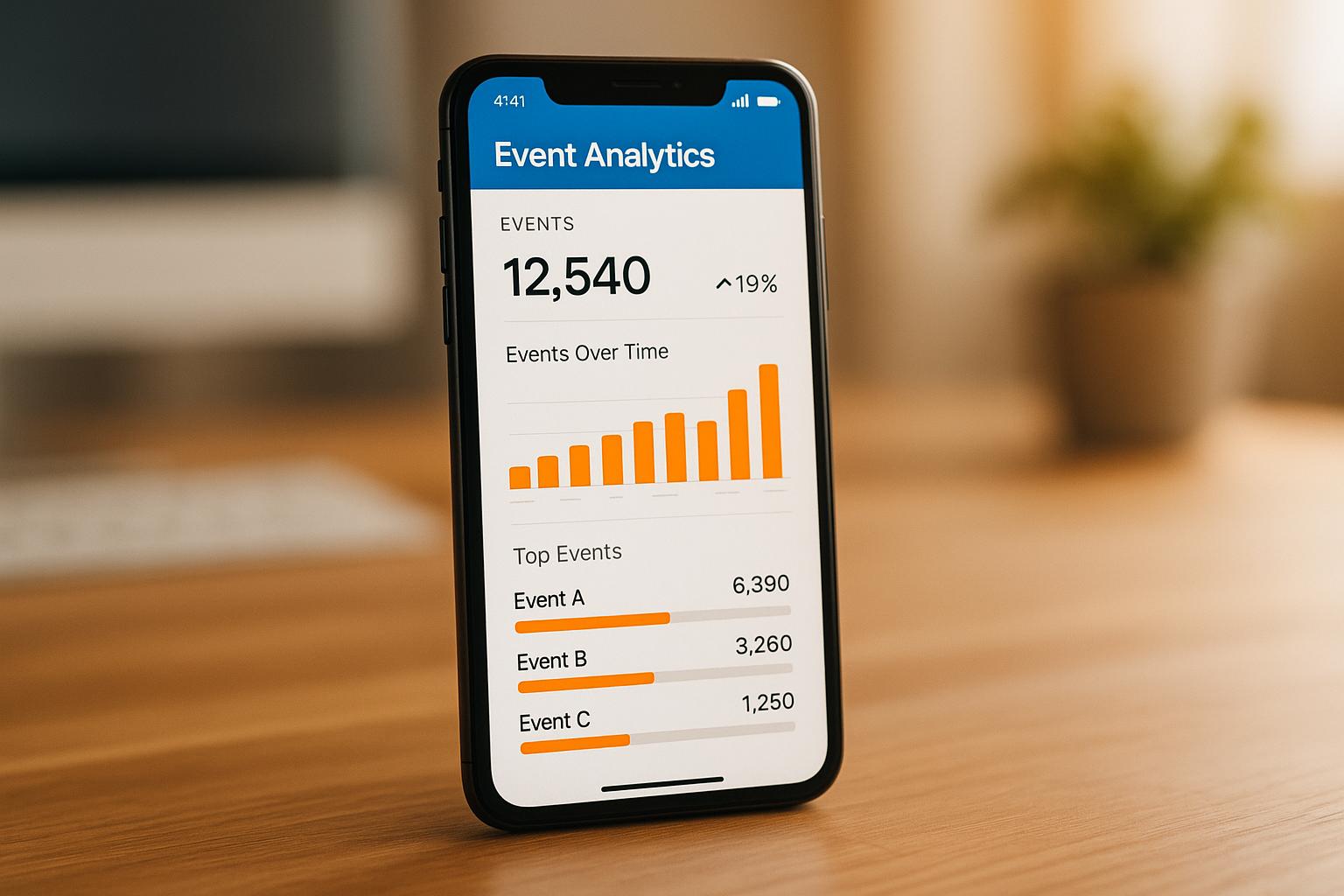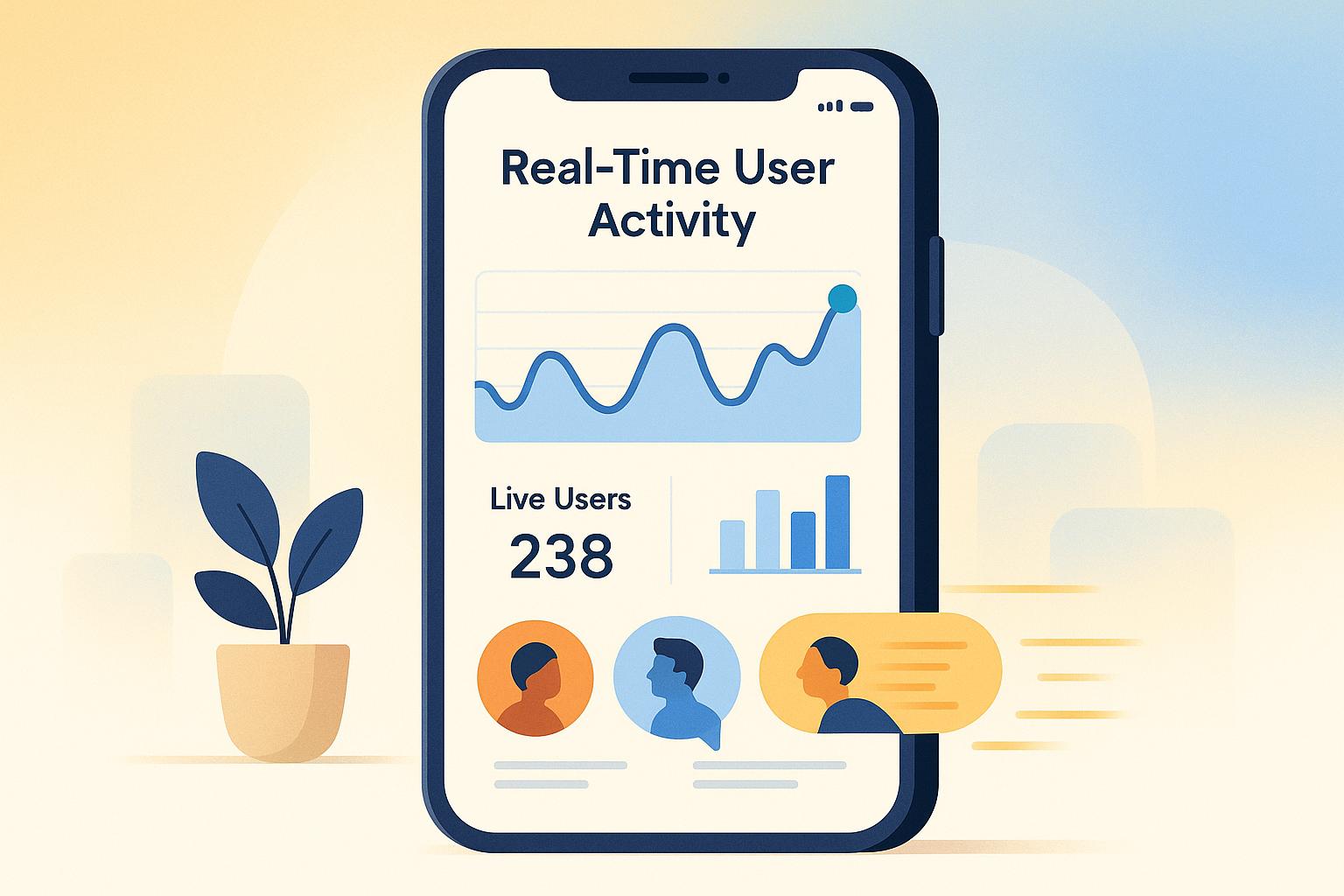Duplicate data costs U.S. businesses $611 billion annually, distorting analytics, inflating costs, and creating compliance risks. Here’s why it matters and how tools can help:
Key Impacts of Duplicate Data:
- Skewed Analytics: Leads to flawed decisions and inaccurate reports.
- Wasted Marketing Spend: Redundant communications and inflated CRM costs.
- Operational Inefficiency: Slows systems, increases storage costs, and wastes employee time.
- Compliance Risks: Complicates adherence to GDPR, CCPA, and other privacy laws.
How Tools Solve These Issues:
- Deduplication Algorithms: Identify exact and partial duplicates using fuzzy matching and probabilistic linkage.
- Real-Time Cleaning Tools: Prevent duplicates during data entry, saving time and costs.
- Identity Resolution Platforms: Unify customer data for accurate, complete profiles.
Duplicate data can reduce revenue by 12% annually. Automating data cleaning and using specialized tools can save resources, enhance decision-making, and improve customer experiences.
How to Remove Duplicate Values in Excel - Data Cleaning Tips🧹

Common Problems Caused by Duplicate Data
Duplicate data is more than just a minor inconvenience - it can derail analytics, inflate costs, and even create compliance headaches. When left unchecked, these issues snowball, making it harder for companies to operate smoothly and make informed decisions.
Distorted Analytics and Reporting
Duplicate records can turn reliable analytics into a guessing game. They inflate metrics, leading to decisions based on flawed insights. For example, duplicate entries might distort job title distributions, making certain roles appear far more common than they actually are. This warped data can mislead businesses about their audience and priorities.
Another issue? User journey mapping becomes nearly impossible when the same customer is recorded multiple times. Instead of seeing a clear path of interactions, companies are left with fragmented, incomplete views of how customers engage with their brand. This lack of clarity can lead to poor user experiences and missed opportunities for conversions.
The impact on decision-making is significant. Leaders relying on flawed reports might allocate budgets incorrectly or pursue strategies that don’t align with reality. For instance, marketing teams could end up investing in campaigns that don’t deliver results, all because the data doesn’t reflect the truth.
Wasted Campaign Spending
Duplicate records don’t just skew analytics - they also drain marketing budgets. When the same customer exists multiple times in a system, companies often send duplicate communications, essentially paying to target the same person more than once.
Worse, this redundancy can irritate customers. According to Gartner, receiving duplicate marketing materials can reduce potential revenue gains by 25%. Many CRM systems charge per record, so inflated databases mean businesses are paying extra for duplicate entries. Some companies have found that as much as 80% of their data is duplicated, resulting in wasted resources and unnecessary costs.
The financial toll is staggering. Experian’s 2022 Global Data Management Research Report revealed that 42% of businesses reported wasted resources and added expenses due to poor data quality. On average, companies lose about 12% of their annual revenue because of these issues.
Higher Operational Costs
Duplicate data doesn’t just hurt marketing - it also drives up operational costs across the board. Redundant records increase storage expenses, slow down system performance, and make backups more costly. Employees often waste time resolving conflicts caused by duplicate information, whether it’s sales teams accidentally contacting the same prospect multiple times or customer service reps struggling to find accurate details.
One striking example comes from a company that reduced its database from 4 million records to just 500,000 - a massive 87.5% reduction. This cleanup not only cut storage and processing costs but also sped up systems and made employees far more productive. These inefficiencies, if left unaddressed, ripple across departments, further hindering data-driven decisions.
The silver lining? Fixing the problem doesn’t have to break the bank. Implementing data deduplication processes can cost as little as $1 per record, making it a highly affordable way to improve data quality.
Compliance and Regulatory Risks
In today’s regulatory climate, duplicate data can create serious legal and compliance challenges. Laws like GDPR and CCPA require businesses to accurately manage customer information, including retrieving, correcting, and deleting records upon request. When data is scattered across duplicate entries, meeting these requirements becomes a logistical nightmare.
The financial penalties for non-compliance are steep. In May 2023, Meta Ireland was fined $1.3 billion for GDPR violations, while Oracle agreed to pay $115 million in November 2024 to settle a lawsuit over improper data collection. These cases highlight how seriously regulators are taking data privacy.
Duplicate data also increases the risk of breaches. Storing sensitive information in multiple places amplifies exposure. An IBM report found that 35% of breaches in 2024 involved data stored in unmanaged sources, often referred to as “shadow data.” These breaches took 26.2% longer to detect and 20.2% longer to contain, driving up costs to an average of $5.27 million per incident.
The healthcare sector faces particularly severe challenges. Hospitals, for example, often have a 10% duplication rate in patient records. Inaccurate data in this context doesn’t just pose compliance risks - it can directly impact patient safety.
Finally, consumer trust is on the line. A 2023 Deloitte survey found that 60% of consumers are concerned about data privacy and security. Companies that fail to manage duplicate data risk losing customer confidence, along with the reputational damage that comes with it. Addressing these vulnerabilities is critical for businesses relying on data to drive their strategies.
How Tools Address Duplicate Data Problems
Modern tools are designed to identify, clean, and prevent duplicate data, offering various approaches tailored to specific needs. Understanding these methods helps determine the best way to tackle duplication issues.
Data Deduplication Algorithms
Algorithms like fuzzy matching and probabilistic linkage are key players in spotting duplicates. Fuzzy matching works well for minor variations, such as typos, but may falter with more complex issues like swapped fields or missing data. On the other hand, probabilistic linkage evaluates multiple attributes simultaneously, using statistical models to estimate whether two records represent the same entity.
A common deduplication method breaks data into chunks, assigns each a unique hash, and uses reference tables to track duplicates.
One standout example comes from healthcare. Probabilistic linkage allows patient records from hospitals, clinics, and pharmacies to be consolidated. For instance, a patient like "Jane Doe", whose records may appear under slightly different names across systems, can have her complete medical history accurately compiled for better care.
Choosing between inline and post-process deduplication depends on specific goals. Inline deduplication removes duplicates before data is stored, saving space but requiring more processing power. Post-process deduplication happens after data is written, using fewer resources but delaying the removal of duplicates.
Duplicate and poor-quality data can drain up to 30% of a company's resources. By addressing these issues, deduplication algorithms not only save resources but also improve system efficiency.
In addition to batch processing, real-time tools ensure data integrity as it flows through systems.
Real-Time Data Cleaning Tools
Real-time cleaning tools automatically remove duplicates as data moves through pipelines, keeping it accurate and reducing delays.
Cloud-based solutions enhance real-time cleaning by offering continuous updates, scalability, and easy access. This is critical, especially when U.S. organizations estimate that 32% of their data is inaccurate, with poor data quality costing an average of $12.9 million annually.
"Data Cleaning, once siloed and cadence-based, is now transparent and in real-time, where all team members across functions work on the same data and see all issues at the same time." – IQVIA
The time savings are immense. While data scientists traditionally spend 60% of their time cleaning data, automated tools handle large datasets quickly with minimal effort. Unlike manual processes, which are slow and tedious, these tools use AI and rule-based validation to detect and correct errors with precision.
| Feature | Benefit |
|---|---|
| Scalability | Manages large datasets in cloud environments, maintaining quality as data grows |
| Performance | Supports parallel processing, reducing delays for continuous data streams |
| Integration | Connects seamlessly with cloud platforms and databases without disruptions |
| Security | Protects sensitive data with encryption and access controls |
Identity Resolution Platforms
Building on deduplication and real-time cleaning, identity resolution platforms unify customer data from multiple sources. These platforms link disconnected systems, providing a complete view of the customer.
By cleaning, standardizing, and merging duplicates, identity resolution platforms create unified customer profiles . This is crucial for integrated marketing campaigns, which are 31% more effective than non-integrated ones. Moreover, 83% of customers are willing to share personal data if it leads to personalized experiences. A staggering 84% of organizations report using identity resolution to automate processes, cut costs, and enhance customer experiences.
These platforms reduce redundancy and improve marketing efficiency by aligning behaviors, preferences, and historical interactions into comprehensive Customer 360 profiles. This enables seamless, personalized experiences across all touchpoints.
To succeed with identity resolution, businesses need accurate and consistent data. This requires robust cleansing, clear governance policies, effective matching algorithms, and regular monitoring to maintain data quality.
sbb-itb-5174ba0
How to Choose the Right Tools
Once you've outlined strategies to tackle duplicate data, the next step is selecting the right tool to strengthen your data management system. Choosing wisely is crucial - picking the wrong tool can lead to integration headaches, wasted resources, and ongoing issues with data quality.
Key Features to Look For
Start by focusing on performance and scalability. Your chosen tool must handle your current data needs while also scaling as your data grows. If it falters with large datasets, it could disrupt real-time operations. Similarly, integration capabilities are critical. A tool that works smoothly with your existing systems - like your CRM, marketing, and support platforms - ensures all your data stays consistent and avoids creating silos of duplicate information.
Cost is another key factor. Keep in mind the "1-10-100 rule": it costs $1 per record to prevent poor data quality, $10 per record to clean up later, and $100 per record if left unaddressed. Poor data quality can cost businesses up to 30% of their revenue annually. Choosing the right tool early on can help avoid these financial pitfalls.
When deciding between tools, ask yourself if you need a dedicated deduplication tool or a broader data management platform. If your other data management needs are already covered, a focused deduplication tool might be the better fit. But if you’re looking for additional features, a comprehensive platform could save you from future integration challenges.
Here are some essential tool features to consider:
| Feature Category | Key Capabilities | Impact |
|---|---|---|
| Data Matching | Fuzzy matching, probabilistic linkage, pattern recognition | Identifies duplicates across variations and formats |
| Real-Time Processing | Continuous cleaning, automated validation | Prevents duplicates at entry, reducing cleanup costs |
| Integration | API connectivity, CRM compatibility, cloud support | Ensures smooth workflows without disruptions |
| Governance | Data privacy controls, security features, audit trails | Protects sensitive information and ensures compliance |
Automation is another must-have. Manual data cleaning is time-consuming and error-prone. Automated tools not only save time but also improve accuracy and reduce long-term maintenance. For example, data observability tools can save companies up to $150,000 annually by improving the accuracy of analytics dashboards.
Additionally, as data regulations grow stricter, data governance features are becoming increasingly important. Look for tools that offer robust privacy controls, security protocols, and consent management capabilities. This includes managing data location requirements for different markets.
Using the Marketing Analytics Tools Directory
To simplify the selection process, the Marketing Analytics Tools Directory is a valuable resource. It helps you identify solutions tailored to your specific needs by categorizing tools based on their capabilities. This is particularly helpful when aligning deduplication tools with your broader marketing technology stack.
The directory allows you to evaluate how different tools integrate with other key functions, like campaign tracking, audience insights, and business intelligence platforms. Featured listings provide detailed information on tool capabilities, pricing, and integration options, which is especially useful for enterprise-level implementations.
Its categorization system makes it easy to filter tools by criteria like real-time processing, scalability for large enterprises, or affordability for small businesses. This targeted approach saves time during research and helps narrow down your options before diving into deep evaluations.
The directory also keeps you updated on emerging tools. As the data management landscape evolves, new solutions often offer better performance or cost-effectiveness. Staying informed can give you a competitive edge.
Finally, the directory supports comparison shopping by presenting multiple solutions side-by-side. This comparative view is invaluable for weighing factors like implementation costs, maintenance needs, and return on investment. With ROI for data management tools ranging between 25% and 87.5%, carefully comparing options ensures you get the most value for your investment.
Conclusion
Drawing from the challenges and strategies discussed, it's clear that duplicate data has far-reaching consequences for businesses. Let’s break down the key impacts and actionable steps to tackle this issue effectively.
Duplicate data creates a ripple effect of problems for organizations. It skews analytics, leading to flawed decisions, wastes valuable resources on ineffective campaigns, drives up operational costs, and introduces compliance risks that could result in penalties. Over time, these issues compound, making it essential for businesses to address them early to stay competitive.
Key Takeaways
The effects of duplicate data are widespread, influencing everything from inaccurate reports to poor customer service and misguided sales strategies. However, modern tools provide powerful solutions to combat these challenges. For instance:
- Data deduplication algorithms can detect duplicates, even when records don’t perfectly match.
- Real-time data cleaning tools stop duplicates from entering your systems in the first place.
- Identity resolution platforms unify customer profiles across various touchpoints, ensuring a clearer picture of your audience.
Automation is a game-changer here. With around 65% of organizations still relying on manual processes for deduplication and data cleaning, automated tools offer a way to cut down on errors, save time, and improve accuracy. Investing in these solutions isn’t just an option - it’s a necessity for businesses looking to reduce costs and enhance data reliability.
Next Steps for Businesses
To effectively manage and reduce duplicate data, businesses must take deliberate, structured actions:
- Start with a data audit: Assess your current systems to understand the extent of duplicate data issues. Look beyond obvious duplicates to find near-matches and records duplicated across departments or systems.
- Define clear data quality standards: Establish company-wide guidelines for what constitutes clean data. This includes setting rules for data entry, validation, and regular maintenance to ensure consistency.
- Leverage specialized tools: Use resources like the Marketing Analytics Tools Directory to find deduplication tools tailored to your needs. This directory helps compare features and integrations, ensuring the tools align with your existing systems.
- Automate wherever possible: Replace manual processes with automated tools for validation, deduplication, and standardization. Automation not only saves time but also ensures more reliable results.
- Promote a culture of data quality: Enforce standardized data entry practices and schedule regular data maintenance. Even the best tools need clean, well-maintained data to perform effectively.
FAQs
How do deduplication algorithms identify exact and partial duplicates in data?
Deduplication algorithms work by identifying duplicates in two main ways: exact matches and partial matches.
For exact matches, the process involves generating unique fingerprints - like hash values (e.g., SHA1 or MD5) - for each record. When two records produce the same hash, they are flagged as identical.
Partial matches, on the other hand, rely on techniques such as fuzzy matching or string similarity metrics. These methods compare specific attributes, like names or addresses, to uncover records that aren’t identical but share noticeable similarities. This approach allows for a more refined detection of duplicates, capturing both obvious and subtle overlaps in datasets.
What are the advantages of using real-time data cleaning tools over traditional batch processing?
Real-time data cleaning tools bring a range of advantages over traditional batch processing methods. They enable immediate validation and correction of data as it’s created, ensuring the information remains accurate and reliable. This allows businesses to make decisions based on the most current data, minimizing errors that can arise from outdated or inconsistent information.
On the other hand, batch processing works by handling large volumes of data at scheduled intervals. While effective for bulk operations, it often introduces delays in spotting and fixing issues. It’s also less practical for managing small, frequent updates since the entire batch needs to be processed, even for minor changes. Real-time tools, however, provide a faster and more adaptive solution, which is especially important for businesses that rely on timely insights to maintain efficiency and stay ahead in competitive markets.
How do identity resolution platforms enhance customer experiences and streamline marketing efforts?
Identity resolution platforms are designed to give businesses a clear, unified picture of each customer by pulling together data from various sources and interactions. This helps marketers provide tailored and seamless experiences, which can lead to higher customer satisfaction and stronger engagement.
By cutting out duplicate records and correctly identifying individual customers, these platforms make it possible to run more precise marketing campaigns. The result? Better conversion rates and less wasted ad spend. Plus, they keep messaging consistent across different channels, helping to build trust and loyalty while streamlining marketing efforts.


